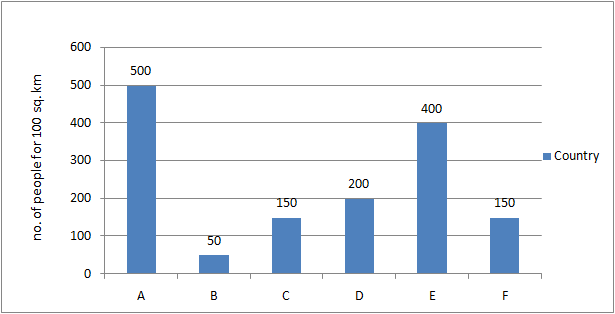1.
The bar graph shows the population density of 6 countries. Study the diagram and answer the following questions.
 What is the ratio of the population densities of country C to country D?
What is the ratio of the population densities of country C to country D?
Show Similar Question And Answers
 Powered By:Omega Web Solutions
Powered By:Omega Web Solutions